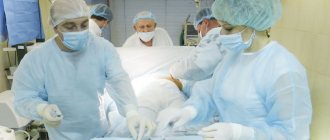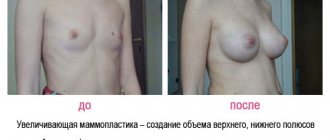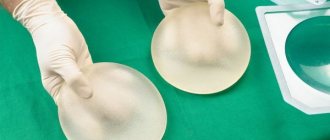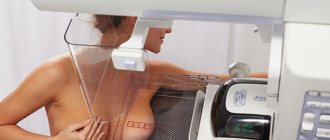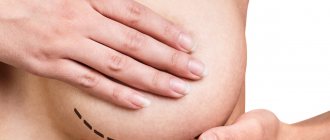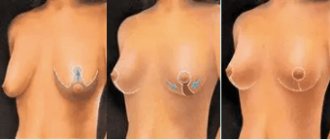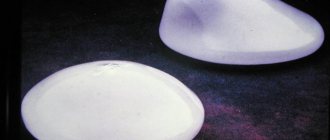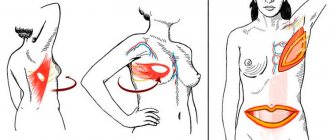Correction of the shape of the nose, or rhinoplasty, is a very popular aesthetic operation. This is not surprising, because at least half of people think about somehow improving this part of their face! However, few of them resort to the help of a plastic surgeon, because surgical intervention is still a drastic measure. And if you don’t like the result, then “returning it the way it was” may no longer be possible!
Non-surgical rhinoplasty using special fillers is a temporary change in the shape of the nose. In this case, the changes will be quite persistent and will last for about two years, after which the procedure can be repeated. Filler injections will help straighten the bridge of the nose, make its tip less pointed or remove its bifurcation, and eliminate unsightly bulges or depressions on the nose. However, it is not possible to achieve a radical change in the shape of the nose or reduce its size in this way.
Indications for non-surgical rhinoplasty
When will rhinoplasty of the nose using fillers help make a person’s face more harmonious and attractive? Here are the main indications for the operation:
- asymmetry of the left and right half of the nose;
- irregularities of the nose - “dips”, depressions, tubercles on it;
- ugly - excessively sharp or forked - tip of the nose;
- “predatory”, pointed shape of the bridge of the nose;
- almost not rising above the face, flat shape of the bridge of the nose, or the presence of a hump on it;
- nasal deformities due to previous injuries;
- correction of defects after unsuccessful surgical rhinoplasty;
- age-related changes in the skin of the nose - its sagging and sagging.
Indications for rhinoplasty
Surgical intervention is recommended for congenital and trauma-induced nasal deformities, as well as for respiratory disorders (nasal breathing). The operation can also be performed at the request of the patient:
- if you have a saddle-shaped nose;
- to correct a hump or a hooked tip;
- to smooth out the sharpness or eliminate excessive length of the nose;
- with asymmetrical lines (deviated septum) and wide nostrils.
For aesthetic reasons, rhinoplasty surgery is performed only on adult patients. Contraindications to its implementation are age over 40-45 years, disorders of the hematopoietic apparatus, severe pathologies of the liver and kidneys, diabetes mellitus, oncology and mental illness.
What fillers are used for rhinoplasty in Ryazan in our clinic?
There are several types of drugs that are injected into the tissue to improve the shape of the nose and eliminate its aesthetic defects:
- based on hyaluronic acid. Such fillers are widely used in contour plastic surgery and have proven themselves to be excellent. After one and a half to two years from the date of administration, the effect may become less pronounced - in this case, simply repeat the procedure;
- based on collagen;
- persistent fillers that do not dissolve for a long time and are not removed from the body for 3 or more years. These are “Radiesse”, “Sculpture”, etc.;
- a long-lasting effect can be achieved by using gels based on synthetic substances, the most popular of which is silicone;
- Increasingly, the patient’s own adipose tissue is used for non-surgical rhinoplasty – this is the so-called lipofilling. This procedure can be combined with liposuction. The latter, in turn, is indicated for patients who cannot get rid of excess fat in problem areas of the body by playing sports and following a diet. This happens, for example, in patients after a hormonal imbalance.
Specialists at our private clinic in Ryazan strongly recommend choosing the first type of drugs for rhinoplasty. The result is less stable and long lasting than in the case of using gels, but such fillers not only improve the shape of the nose, but also have a positive effect on the skin of the entire face. The fact is that “hyaluronic acid” is a natural moisturizer, an analogue of a sponge that attracts precious moisture and retains it, keeping the skin young, beautiful and elastic.
Consultation about rhinoplasty in Ryazan
At the initial consultation, the client can express his wishes to the surgeon and find out the possibility of rhinoplasty. At the second meeting, the doctor assesses the need for surgery to change the shape, volume and tip of the nose.
It is important to understand that the modeled desired option is approximate; achieving absolute identity is impossible. The client should also familiarize himself with the operations performed on other patients. Having seen visual examples of “before” and “after”, the patient will be able to objectively evaluate and create a correct idea of the final result of rhinoplasty.
The patient must be aware that all parts of the face are interconnected. Changing the shape of your nose can significantly change your face.
Successful rhinoplasty depends on the characteristics of the patient's facial skin. Oily and thick epidermis, too wide nostrils in some cases make it difficult to achieve the desired aesthetic effect, especially if surgery is performed to correct the tip of the nose.
If a patient requests to change the result of a previously performed rhinoplasty, the surgeon must conduct a thorough clinical examination during the consultation. It is important to identify possible anomalies and causes of unsuccessful surgery at the initial stage and determine the possibility of repeat surgery.
During the consultation, the patient needs to take a photo of the nasal sinuses. This is necessary to make sure that there are no pathologies that could worsen after surgery. Analysis of the image will help the surgeon determine the need for surgical intervention in the area of the nasal concha and septum.
Before rhinoplasty Rhinoplasty is a full-fledged surgical procedure and is performed under general anesthesia in combination with local anesthesia. In this regard, the patient must undergo a comprehensive examination, including clinical and laboratory examination and consultation with specialists (ENT, therapist, anesthesiologist). To avoid complications during surgery, you should promptly notify the doctor about the presence of chronic and acute diseases at the time of the proposed surgical intervention, past illnesses, possible allergic reactions to medications, etc. Rhinoplasty is performed in a specialized clinic. Rhinoplasty, like most plastic surgeries, imposes some temporary restrictions on lifestyle before the operation: it is undesirable to smoke, take aspirin and other drugs that affect blood clotting, because this can cause bleeding during surgery.
Nose plastic surgery The technique of rhinoplasty depends on the tasks facing the surgeon and the existing conditions. The essence of the intervention is to correct the bone and cartilage structures that form the skeleton of the nose. There are two methods of rhinoplasty: with an external incision on the skin of the nasal septum (open rhinoplasty) and using only intranasal incisions (closed rhinoplasty). With closed rhinoplasty (internal rhinoplasty), the surgeon makes all the incisions and manipulations inside the nasal cavity; one small incision is made in each nostril, which are not visible from the outside and after some time are difficult to distinguish even during a medical examination. The skin is separated from the underlying cartilage and bone tissue, after which the shape or size of the nasal cartilage is corrected and the skin is restored. After open rhinoplasty, where the incision passes through the skin of the nasal septum, at its narrowest point, a scar remains on the skin of the nasal septum, which is normally hardly noticeable. In addition, additional skin incisions are sometimes used at the base of the nostrils. Scars from these incisions are usually almost invisible. If it is necessary to perform complex rhinoplasty, the surgeon performs manipulations on the bony part of the nose. Using specially designed instruments, the section of bone that forms the nasal hump is removed. The bone parts are also surgically compared to form the shape of the nose. In the most complex cases, rhinoplasty is required in several stages. The duration of a nose job is strictly individual and usually does not exceed two hours.
Features of rhinoplasty at ON CLINIC Ryazan
As part of a preliminary consultation with a specialist, the result of the procedure and the drug that will be used as a filler are discussed. In addition, it is necessary to find out whether the patient has any contraindications to non-surgical rhinoplasty. These include:
- endocrine diseases such as diabetes mellitus and thyroid diseases with impaired thyroid function;
- hemophilia;
- any malignant tumors;
- some autoimmune diseases;
- tendency to form keloid scars on the skin;
- pregnancy and breastfeeding;
- recovery period after anti-aging procedures such as peeling or laser skin resurfacing;
- inflammation of the skin in the intervention area;
- ARVI;
- Women should not schedule rhinoplasty during their menstrual period.
Fillers are injected using local anesthesia. Typically, the duration of the procedure does not exceed 30-40 minutes, and after its completion the patient can go home. The very next day you can return to your daily routine. The effect of non-surgical rhinoplasty can be fully assessed within a week after the procedure.
Primary rhinoplasty (Ryazan)
Primary rhinoplasty is performed on those patients who are experiencing an aesthetic correction procedure for the first time. Features of primary rhinoplasty: • The operation lasts from 30 minutes to 2 hours. • Intervention can be external (hidden) or internal (invisible). • Hospitalization of the patient for 24-48 hours. • Full recovery after surgery occurs within 10 days.
Anesthesia Depending on the case with which the surgeon has to work, the patient is given local or general anesthesia. General anesthesia is used for intervention in the bony part of the nose. Local anesthesia in combination with sedatives is administered to the patient for rhinoplasty of the tip of the nose and reduction of the hump.
Methods of surgical intervention • Natural. Does not leave scars. • Through an external incision. • Through the anterior part of the nasal septum (columella) if there are complex deformities. • Through the nasal sulcus for nostril reconstruction.
To carry out the manipulation, the surgeon separates the nasal skin and mucous membrane from the osteochondral support. The skin, due to its elasticity, is able to lie on a modified frame.
What the surgeon works with: • cartilage at the tip of the nose • nasal septum • osteotomy of the moving part of the bone • circumcision of the nostrils
Stages of the operation As soon as the patient lies on the operating table, he is given anesthesia, the surgeon determines the location of the incisions and marks the nose.
Stage 1: tip detachment. The surgeon makes an incision inside the nostrils. The excess part is removed from the cartilage on each side. This will make the tip of the nose thinner. When the cartilaginous septum is bent, it is corrected.
Stage 2: removal of the hump. For resection, the bone part is broken and removed. Finally, a file is used. The bones of the nose are very mobile, which allows you to create a slightly concave or completely straight bridge of the nose.
Stage 3: After the necessary movement of the bones, the incisions are sutured with absorbable sutures. A plaster plate is placed on the nose.
The possibilities of modern rhinoplasty make it possible not only to make the nose smaller or thinner, but also to transplant cartilage. This surgery is used to enlarge certain parts of the nose to improve its overall appearance.
The doctor's consultation
At the appointment, the doctor listens to the patient, conducts an examination and takes the necessary measurements of the nose (length, width, etc.). Having ruled out contraindications for rhinoplasty, he gives a referral for tests and additional examinations (consultations of related specialists). Patients with body dysmorphic disorder need to meet with a psychologist. People with high blood pressure and heart pathologies require permission from a cardiologist for surgery.
List of mandatory tests:
- ECG at rest and with stress.
- X-ray examination of the pulmonary system (fluorography).
- Nomogram (study of bone structures and structure of the sinuses, for the presence or absence of various diseases).
- Rhinomamometry (screening of nasal breathing characteristics).
- Biochemistry, complete blood count (CBC), determination of sugar and coagulation characteristics (coagulation), absence of infections.
- General urinalysis (UCA).
How is the operation performed?
14 days before the date of surgery (provided that the patient is clinically healthy), you should not take products that contain salicylates or use hormonal contraceptives.
7 days before the operation, you must stop using cigarettes (nicotine entering the body seriously impairs blood flow), otherwise the sutures will take a very long time to heal.
The operation is performed under general anesthesia and, depending on the type of surgery, lasts from 1 to 3 hours.
Indications for mammoplasty:
- Micromastia (small breasts and is a congenital pathology);
- Macropathy (breasts are sharply increased in size, while the location and elasticity are preserved);
- Post-lactation involution (significant decrease in size after breastfeeding);
- Ptosis of the mammary glands (breasts are drooping, but the size is preserved);
- Gynecomastia (hypertrophied breasts in men).
It is forbidden to eat or drink less than 12 hours before surgery.
